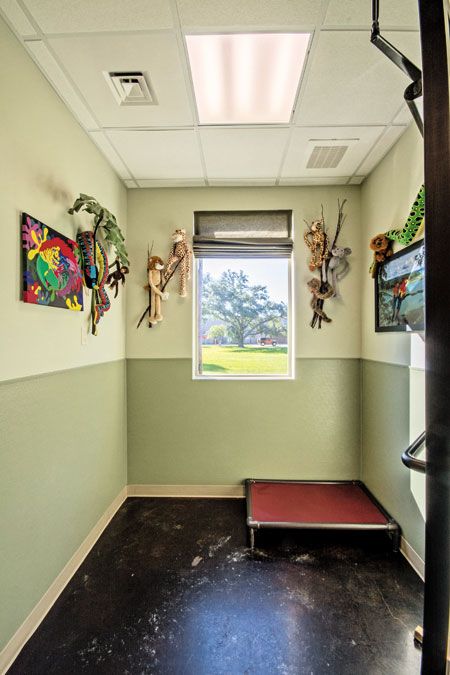Six fantastic fads in veterinary hospital design
Luxury boarding is profitable for practices that do it right, and more visibility with glass seems like a no-brainer. We hope these fads never die.
Design trends in veterinary hospitals come and go, but some stand the test of time. Veterinary Economics asked three architects to share with us the fads they've seen that have lasted-and others they say are going the way of the Dodo.
Which fads are the extinct flightless variety? Our architects told us:
Large doctors' offices. They were designed to double as space for quiet reading or small meetings. In practice, these offices sat vacant most of the time.
Vaulted ceilings. They make utility repair and adjustment difficult, and they lack the noise control a lower ceiling provides for this space.
Drive-through services. People love the idea, but it just doesn't seem to catch on.
Do this instead:

>>> More glass: Incorporating lots of windows in treatment areas offers visibility. The open floor plan of Hunterdon Hills Animal Hospital's treatment area allows doctors and team members to see into other areas of the hospital, like surgery, with ease.

>>> Doctors' office: Hunterdon Hills Animal Hospital in Whitehouse Station, New Jersey, uses a “fishbowl”-style doctors' office located right off the treatment area. This allows doctors to be near the action.

>>> Luxury boarding: More and more hospitals are making space for luxury boarding suites in their floor plans. Clients love the extra special feeling these themed and often specially decorated suites provide. Check out an example from Country Club Veterinary Center in Lake Charles, Louisiana, with a jungle theme.
Photos courtesy Rikki Snyder, Rikki Snyder Photography and Country Club Veterinary Clinic.
Dan Chapel, AIA, NCARB, of Chapel Associates Architects, in Little Rock, Arkansas, as well as Heather Lewis, AIA, NCARB, and Vicki Pollard, AIA, CVT, of Animal Arts in Boulder, Colorado, contributed to this story.